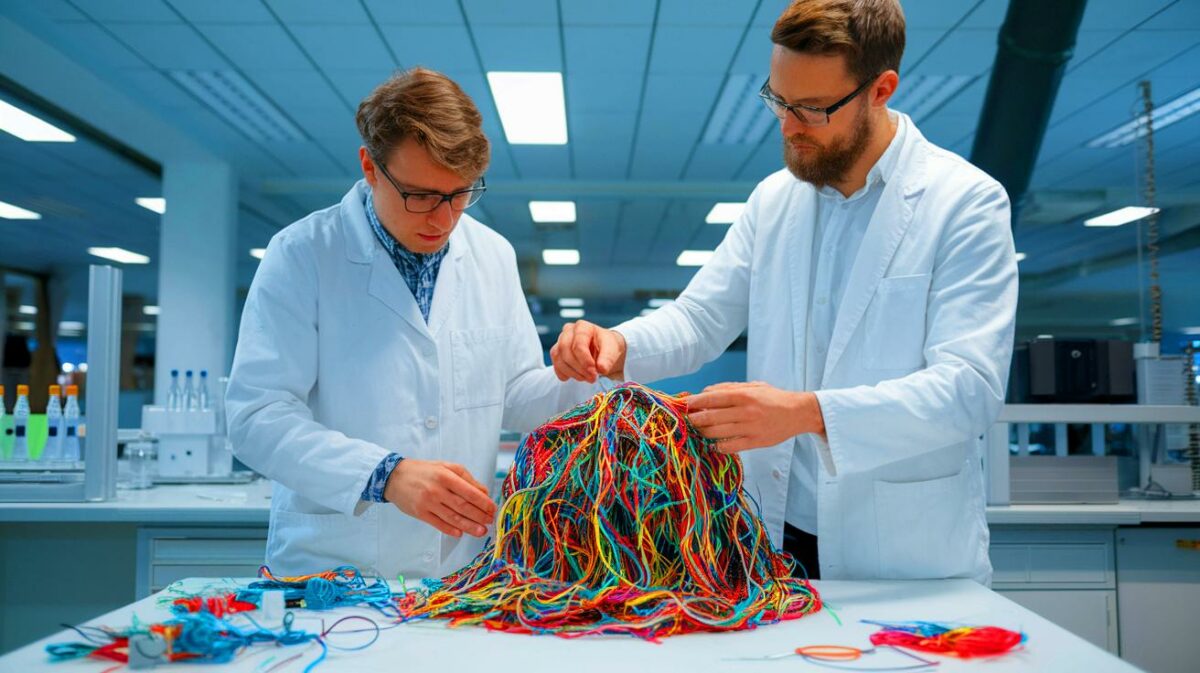| IN A NUTSHELL |
|
The global plastic waste crisis has reached unprecedented levels, demanding innovative solutions to combat its detrimental effects on the environment. One such groundbreaking initiative comes from Germany’s Fraunhofer Institute, which is spearheading efforts to transform millions of metric tons of household plastic waste into 3D printing filaments. This endeavor not only addresses the pressing issue of plastic pollution but also meets the increasing demand for recycled materials in the manufacturing sector. As the world grapples with the challenges posed by single-use plastics, the Fraunhofer Institute’s approach offers a promising pathway toward sustainability and resource efficiency.
The Scale of Plastic Waste in Germany
In recent years, Germany has been grappling with a mounting plastic waste problem, reaching staggering figures of 5.6 million metric tons in 2023. A significant portion of this waste is generated from single-use products consumed domestically. Unfortunately, less than a third of this colossal volume can be effectively recycled. The Fraunhofer Institute for Manufacturing Technology and Advanced Materials (IFAM) has risen to the challenge by pioneering a method to convert this waste into 3D printing filaments. This transformation process not only diverts plastic from landfills but also contributes to a more sustainable manufacturing industry by providing high-quality, recycled materials.
According to Dr. Dirk Godlinski, a project manager at Fraunhofer IFAM, the institute faced numerous challenges in meeting the stringent purity, shape, and size standards required for 3D printing. The collaboration with Dr. Silke Eckhardt from Hochschule Bremen—City University of Applied Sciences (HSB) proved instrumental in overcoming these hurdles. Eckhardt’s expertise in sustainable energy systems and resource efficiency played a crucial role in refining the recycling process, ensuring the production of high-purity filaments suitable for use in additive manufacturing.
Declining Food Enjoyment in the U.S. and Its Impact on Health
Challenges and Innovations in Recycling
Recycling post-consumer waste presents unique challenges compared to processing plastic residue from industrial production. The materials are often heterogeneous and contaminated, making them difficult to handle. Packaging waste, in particular, significantly contributes to the surge in household plastic waste. Eckhardt’s team undertook the daunting task of recycling these tough-to-handle plastics for additive manufacturing. At the university’s laboratories for Circular Economy, the team meticulously processed the sorting plant output, employing techniques such as float-sink separation and near-infrared technology to identify and eliminate foreign plastics.
Achieving a remarkable 99.8% purity level, the team successfully prepared the plastic for further processing. The purified material was then returned to Fraunhofer IFAM, where it was used to produce homogeneous polypropylene, a durable and flexible form of plastic. This innovative approach not only enhances the quality of recycled materials but also opens new possibilities for their application in various industries, including aviation and automotive.
From Waste to 3D Printing Filaments
Once the plastic had been purified, the next step involved processing the flakes of recycled polypropylene in an industrial extruder at Fraunhofer IFAM. The expertise of the team lay in precisely adjusting the mechanical screws, temperatures, pressures, and speeds to produce a homogeneous polypropylene strand. The final product needed to meet specific criteria, including a round shape, a diameter of 0.002 inches, and a smooth surface, to be suitable for 3D printing.
With these specifications met, the team successfully printed their first components, including caps, demonstrating the viability of the recycled filaments for practical applications. Researchers are now focused on optimizing the production process further, exploring the potential of introducing additives such as glass fibers during compounding. This refinement could enable the manufacturing of components for high-demand sectors like aviation and automotive, showcasing the versatility and strength of recycled materials in advanced manufacturing.
“Racing Past Rivals”: New US Hypersonic Testbed Contract Surges Ahead of Russia, China
The Importance of a Circular Economy
The initiative by the Fraunhofer Institute underscores the growing importance of a circular economy in addressing climate change and resource efficiency. As Dr. Silke Eckhardt emphasized, increasing the demand for recycled materials is crucial for conserving energy and resources. By reusing and recycling waste, significant strides can be made toward environmental sustainability. The successful transformation of household plastic waste into high-quality 3D printing filaments demonstrates the potential of innovative solutions to tackle global environmental challenges.
As the world continues to grapple with the consequences of plastic pollution, the question remains: How can other countries and industries adopt similar approaches to turn waste into valuable resources, ensuring a sustainable future for generations to come?
Did you like it? 4.5/5 (20)








Wow, this is amazing! Can they use this technology to recycle other types of waste too? 🤔
It’s about time we found a way to deal with all that plastic waste. Kudos to the Fraunhofer Institute! 👏
I wonder how cost-effective this process is compared to using new plastic materials?
99.8% purity level? That’s incredible! But what happens to the remaining 0.2%?